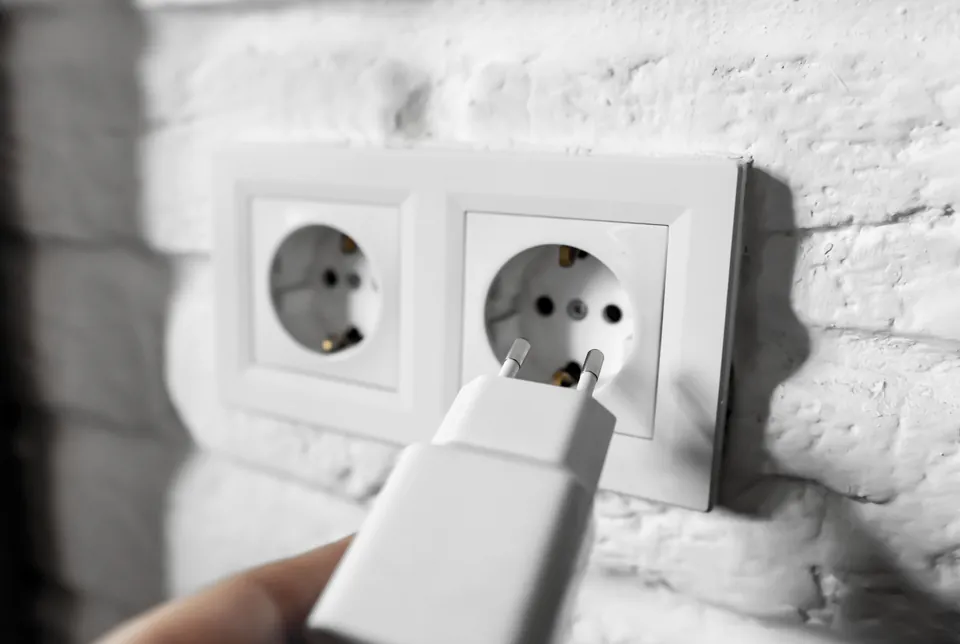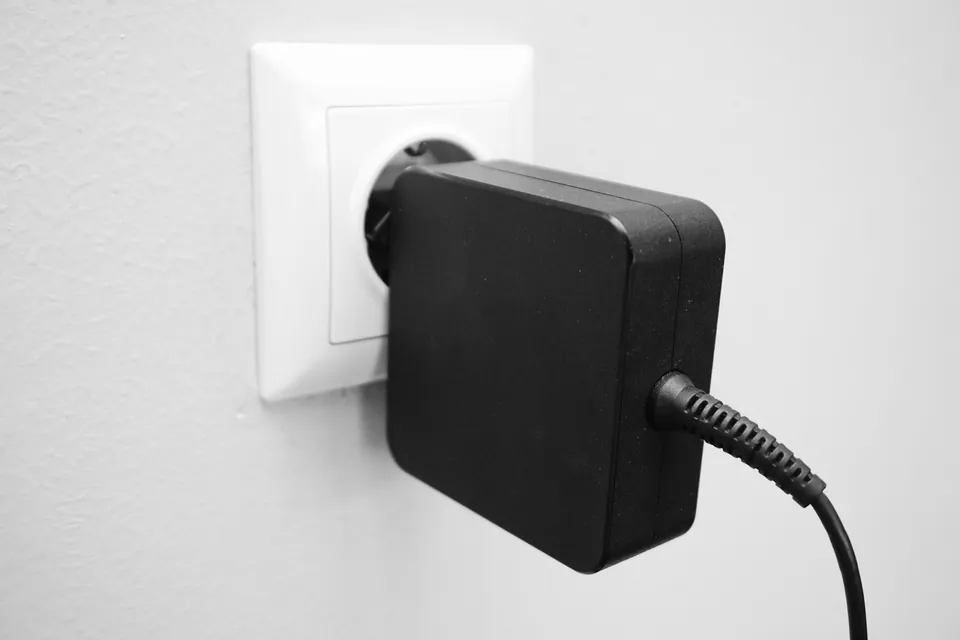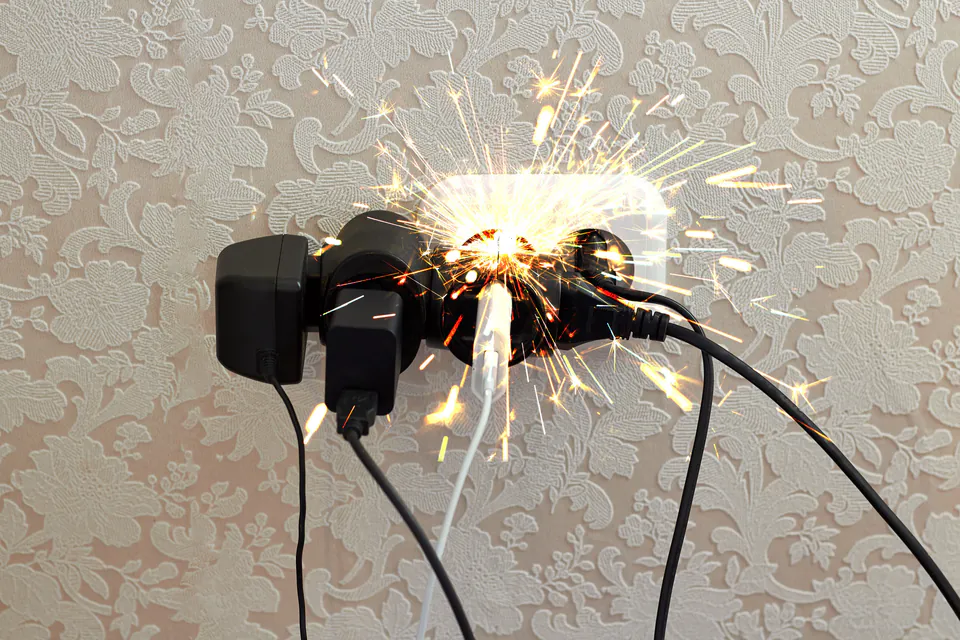Electricity and Plugs in Budapest
You need to keep your phone charged for those amazing Danube sunset photos. Or maybe you want to use your laptop in the hotel after walking around all day. Getting your devices to work in Budapest is pretty simple once you know the basics about Hungary's electrical system.
What You Need to Know About Budapest's Power
Budapest uses the same electrical setup as most of Europe. Here's what matters:
- Voltage: 230 Volts (V)
- Frequency: 50 Hertz (Hz)
- Plug Types: Type C and Type F
This is different from what you get in North America and Japan, where they use 100-120V. The frequency is also different (they use 60Hz). Why does this matter? Well, if you plug in something that's only made for 110V into a 230V outlet, you're probably going to fry it.

The Two Types of Outlets You'll See
When you're in Budapest, you'll run into two kinds of wall outlets. Both use round pins, but they're a bit different.
Type C: The Simple One
Type C plugs have two round pins and that's it. No grounding, no extra bits. These are really common all over Europe. You'll use these for simple stuff like phone chargers or camera chargers. The pins are about 4.0 mm thick.
Type F: The Beefier One
Type F plugs also have two round pins, but they're slightly thicker (4.8 mm). The big difference is those metal clips on the sides. These clips give you grounding, which is important for bigger appliances or anything with a metal case. These can handle more power too (up to 16 amps).

Good News About Compatibility
Here's something that makes life easier: Type C plugs fit perfectly into Type F sockets. Since Type F sockets are everywhere in Hungary, most of your basic travel adapters will work just fine. You just won't get the grounding if you're using a Type C plug in a Type F socket.
For most travel electronics, this isn't a big deal. But if you have something that really needs grounding for safety, you should get a proper Type F adapter.
Will Your Stuff Work in Budapest?
Different countries use different electrical systems. We learned this the hard way when we first started traveling and didn't realize our devices might not work abroad. Let's see how Budapest compares to other places.
Compatibility Guide: Budapest vs. The World
| Region/Country | Standard Voltage | Frequency | Plug Type(s) | Needs Adapter? | Needs Converter? |
|---|---|---|---|---|---|
| Hungary (Budapest) | 230V | 50Hz | C, F | - | - |
| North America (US/CA) | 120V | 60Hz | A, B | Yes | Yes, unless device is dual-voltage |
| UK & Ireland | 230V | 50Hz | G | Yes | No |
| Australia & New Zealand | 230V | 50Hz | I | Yes | No |
| Japan | 100V | 50/60Hz | A, B | Yes | Yes, unless device is dual-voltage |
| China | 220V | 50Hz | A, C, I | Yes (for A & I) | No (220V is compatible) |
| India | 230V | 50Hz | C, D, M | Yes (for D & M) | No |
| Brazil | 127V / 220V | 60Hz | C, N | Yes (for N) | Maybe (check local voltage & device) |
What This Means for You
If you're coming from the UK, Ireland, Australia, New Zealand, India, or parts of China that use 220V, you're in luck. The voltage works fine with Budapest's 230V system. You just need a plug adapter to change the shape.
But if you're from North America or Japan, you've got a bigger problem. Your devices expect 120V or 100V, and Budapest gives you 230V. That's more than double! You'll need both a plug adapter AND a voltage converter for anything that can't handle the higher voltage.
Brazil is tricky because different areas use different voltages. You'll need to check what your devices expect and figure out if you need a converter.

Adapter vs. Converter: They're Not the Same Thing
We see people mix these up all the time, and it can be expensive if you get it wrong. They do completely different jobs.
Plug Adapter: Just Changes the Shape
A plug adapter is basically a shape converter. It lets your flat American plugs fit into round European holes. Or your chunky British plugs fit into European sockets. That's all it does.
It doesn't change the electricity at all. The voltage and frequency stay exactly the same. So if you plug a 110V device into a 230V outlet using just an adapter, you're going to have a bad time.
Voltage Converter: Changes the Power
This actually changes the electrical power. Since Budapest uses 230V and places like the US use 120V, you need something to "step down" that power. Without it, your 120V device gets hit with almost double the power it was designed for.
We always tell people to think of it like this: adapters fix shape problems, converters fix power problems.
You only need a converter if your device can't handle Budapest's 230V. If it says something like "100-240V" on it, you're good. If it only says "110-120V," then you definitely need a converter.
All-in-One Units
Some travel products do both jobs in one device. These can be handy but they're usually bigger and cost more. We've found that most people just need a simple adapter for their phone chargers and laptops.
Check If Your Devices Are Travel-Ready
Most modern electronics can handle different electrical systems around the world. You just need to know where to look.
Finding the Important Label
Look for tiny text on your device, the power cord, or that chunky part of the charger. You want to find something that says "INPUT." This tells you what kind of power the device can safely use.

The Magic Words: "INPUT: 100-240V, 50/60Hz"
If you see this on your device, you're golden. This means it can handle anything from 100V up to 240V and both frequency types. These devices just need a plug adapter to fit into Budapest's sockets.
We see this on pretty much all phone chargers, laptop chargers, tablet chargers, and camera chargers these days. Even electric toothbrushes and shavers often have this.
The Warning Signs
If you see something like "INPUT: 110-120V," stop right there. This device is only made for North American/Japanese power. Plug it into Budapest's 230V and you'll probably kill it instantly.
On the flip side, if it says "INPUT: 220-240V," then it's perfect for Budapest but won't work in North America without a converter.
Hair Dryers and Other Power-Hungry Devices
We always warn people about these:
- Hair dryers
- Hair straighteners
- Curling irons
- Travel kettles
- Clothes irons
These things use tons of power and are usually single-voltage. If you have a 110V hair dryer and want to use it in Budapest, you need a really heavy-duty converter. These converters are huge, heavy, and expensive.
We learned this lesson when we tried to use a small travel converter with a hair dryer once. It lasted about 30 seconds before both the converter and the hair dryer died.
Honestly, for these high-power items, it's easier to:
- Ask your hotel if they have one you can use
- Buy a dual-voltage travel version before your trip
- Just buy a cheap one when you get to Budapest
- Go without it for a few days

Where to Get Adapters in Budapest
We always tell people to buy adapters before they travel. But sometimes you forget or your adapter breaks. Here's where to find them in Budapest.
Buy Before You Go (Seriously)
This is the smart move. You can research exactly what you need, compare prices, and not worry about it when you arrive. Universal adapters that work in multiple countries are pretty cheap online.
If You Need to Buy in Budapest
Sometimes things happen. We once had an adapter die on the first day of a trip. Here's where we found replacements:
-
Budapest Airport: There are some convenience stores and electronics kiosks in the terminals. The selection isn't great and prices are high, but if you're desperate, they usually have basic adapters.
-
Electronics Stores (Your Best Bet): These are much better for selection and prices:
- MediaMarkt: You'll find these in big malls like Mammut, Arena Mall, and WestEnd City Center. They're usually open Mon-Sat 10:00-20:00 or 21:00, Sun 10:00-18:00 or 19:00.
- Euronics: Another electronics chain in places like Corvin Plaza, Köki Terminál mall, and Savoya Park mall.
-
Big Supermarkets: Some larger Interspar or Tesco stores have basic travel adapters, especially during tourist season. But don't count on finding anything fancy.
-
Hotels: It's worth asking at the front desk. Some nicer hotels keep adapters for guests to borrow or buy. But don't plan on this.

Mall Strategy
We found that hitting one of the big malls works really well. Places like WestEnd City Center, Arena Mall, or Mammut usually have a MediaMarkt or Euronics. Plus you can get there easily on the Metro, and there's other stuff to do while you're there.
Stay Safe with Electricity Abroad
We've seen some pretty scary electrical situations while traveling. Here's how to avoid them.
-
Don't Buy Junk: We know it's tempting to get the cheapest adapter you can find, but cheap electrical stuff can be dangerous. We've seen adapters overheat and even catch fire. Spend a few extra dollars on something from a real brand with safety certifications.
-
Check Power Limits: Every adapter and converter has a maximum wattage it can handle. Don't exceed it. We once saw someone try to plug an 1800W hair dryer into a 300W converter. It didn't end well.
-
Look Before You Plug: Always check adapters and converters for cracks, bent pins, or damaged wires before using them. If something looks wrong, don't use it.
-
Don't Force Anything: Plugs should slide in smoothly. If you have to force it, you're probably doing something wrong and could damage the outlet.
-
Grounding Matters: Some devices really need that grounding connection for safety. If your device has three pins or metal contacts, try to use a proper grounded adapter when possible.
-
No Daisy-Chaining: Don't plug adapters into adapters or extension cords into travel adapters. This is a great way to overload things and start a fire. We've seen people do this in hotels and it makes us nervous every time.
